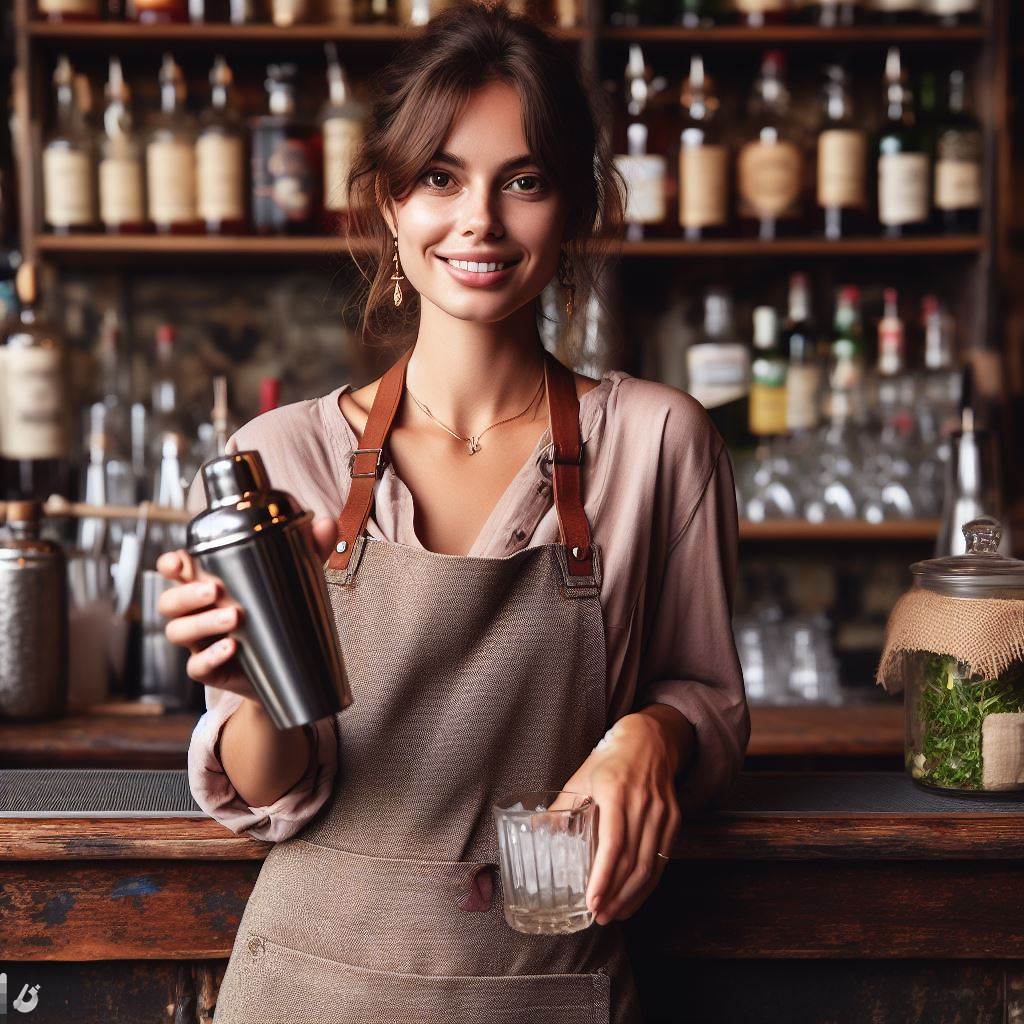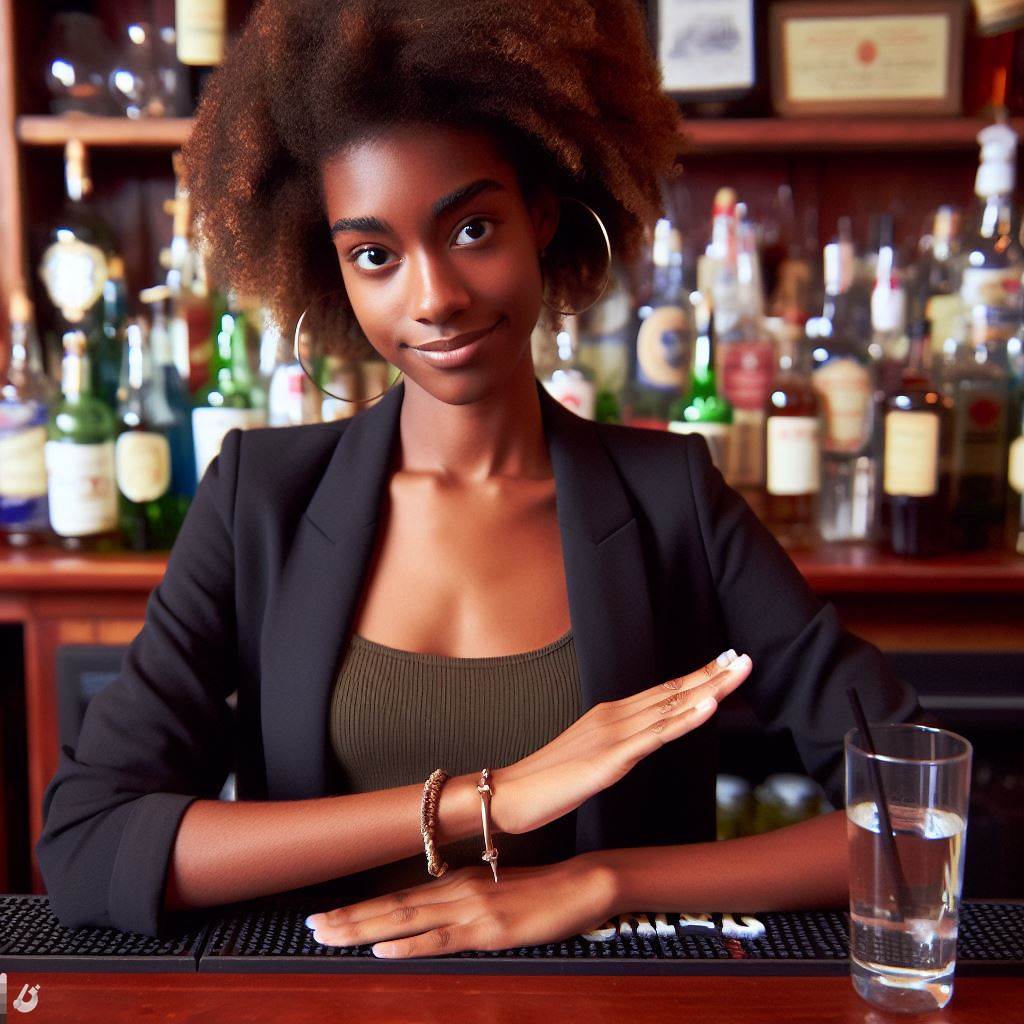Introduction
Hook: Engaging statistic or anecdote about craft cocktails
Craft cocktails have become increasingly popular, with sales of more than $1.6 billion in the United States alone.
The craft cocktail trend originated in the late 19th century and experienced a resurgence in the early 2000s.
America’s influence on craft cocktails has had a significant impact on drinking trends worldwide.
Craft cocktails have become a staple in bars and restaurants, offering unique and artisanal drink options.
The use of high-quality, locally sourced ingredients has become a hallmark of craft cocktails.
Bartenders have become mixologists, experimenting with flavors and techniques to create one-of-a-kind drinks.
Background information on the craft cocktail trend
The craft cocktail trend in America has inspired bartenders around the world to push the boundaries of traditional cocktails.
Mixologists in Europe have embraced the craft cocktail movement, creating their own unique twists on classic drinks.
Asia has also seen a rise in craft cocktail bars, with innovative combinations of flavors and presentation.
Thesis statement: America’s influence on craft cocktails has shaped global drinking trends
America’s influence on global drinking trends can be seen in the rise of craft distilleries worldwide.
The popularity of craft cocktails has also led to an increased demand for high-quality spirits and mixers.
The craft cocktail movement has sparked a renaissance in cocktail culture, with a focus on quality and craftsmanship.
Therefore, America’s influence on craft cocktails has had a profound impact on global drinking trends.
The rise of craft cocktails has transformed the way people enjoy and appreciate cocktails worldwide.
Whether it’s a classic Old Fashioned or a innovative concoction, craft cocktails have become a symbol of sophistication and creativity.
Historical Background of Craft Cocktails in America
Brief history of cocktail culture in the United States
- Cocktails have been a part of American drinking culture since the early 19th century.
- In the early days, cocktails were simple and made with few ingredients like spirits, sugar, water, and bitters.
- The term “cocktail” was first defined in a newspaper in 1806 and quickly gained popularity.
- The cocktail culture grew during the mid-19th century with the invention of new spirits and liqueurs.
- Bartenders started experimenting with different ingredients and techniques to create unique and flavorful cocktails.
Emergence of craft cocktail movement in the late 20th century
- In the late 20th century, the cocktail culture witnessed a revival and the birth of the craft cocktail movement.
- This movement was influenced by the growing interest in quality ingredients, homemade syrups, and fresh produce.
- Craft cocktail bars started popping up in major cities, offering a more refined and sophisticated drinking experience.
- The movement emphasized the importance of using artisanal spirits and locally sourced ingredients.
- The art of mixology became more prominent as bartenders focused on creating balanced and innovative flavor combinations.
Notable American bartenders and mixologists who contributed to the trend
- Jerry Thomas, often referred to as the “father of American mixology,” played a significant role in popularizing cocktails in the 19th century.
- Dale DeGroff, known as “King Cocktail,” is credited with reviving classic cocktails and elevating the craft cocktail movement.
- Audrey Saunders, founder of New York City’s Pegu Club, introduced modern mixology techniques and helped shape the craft cocktail scene.
- Julie Reiner, owner of Clover Club and Leyenda, contributed to the trend by emphasizing the importance of fresh ingredients and balanced flavors.
- Many other talented bartenders and mixologists across the country have also made notable contributions to the craft cocktail renaissance.
The historical background of craft cocktails in America showcases the evolution of cocktail culture over the years.
From simple concoctions to refined and innovative creations, the United States has played a significant role in shaping global drinking trends.
Today, craft cocktails continue to gain popularity worldwide, with bartenders and mixologists pushing the boundaries of creativity and exploring new flavors.
As the craft cocktail movement grows, it is fascinating to observe how America’s influence continues to shape the way we enjoy and appreciate cocktails.
Read: Challenges and Rewards of Bartending in Big US Cities
Transform Your Career Today
Unlock a personalized career strategy that drives real results. Get tailored advice and a roadmap designed just for you.
Start NowAmerican Ingredients and Techniques
Use of local and regional ingredients in craft cocktails
- Craft cocktail enthusiasts strive to incorporate local and regional ingredients into their drinks.
- This trend emphasizes sustainability by supporting local agriculture and reducing carbon footprints.
- Bartenders experiment with unique flavors from locally sourced fruits, herbs, and even vegetables.
- By using locally grown ingredients, craft cocktails reflect the distinctiveness of each region’s terroir.
- Craft cocktails become more than just a beverage; they embody a sense of place and pride.
Distillation and production methods unique to America
- America has its own unique distillation and production methods that impact craft cocktails.
- For instance, bourbon, a classic American spirit, must be made from at least 51% corn.
- The use of corn imparts a distinctive flavor profile to bourbon, setting it apart from other whiskey varieties.
- American craft distilleries often experiment with aging spirits in different types of barrels, like oak or charred wood.
- These unique production methods contribute to the complexity and flavor diversity found in craft cocktails.
Examples of American cocktails that showcase local ingredients and techniques
- The Mint Julep, a quintessential American cocktail, features bourbon, sugar, water, and fresh mint.
- The use of fresh mint, often grown locally, adds a refreshing twist to this classic drink.
- Another example is the Pimm’s Cup, which originated in England but gained popularity in America.
- The American twist on the Pimm’s Cup includes adding local fruits such as strawberries or apples.
- These examples highlight how American cocktails creatively incorporate local ingredients and techniques.
Most importantly, craft cocktails in America showcase a strong emphasis on utilizing local and regional ingredients as well as unique distillation and production methods.
Bartenders strive to create drinks that embody the distinctiveness of each region’s flavors and local resources.
This approach not only supports sustainable agriculture but also allows for the creation of cocktails that tell stories of their origins.
The use of local ingredients and techniques gives American cocktails a sense of place and allows them to stand out in the global drinking scene.
Whether it’s a Mint Julep with locally grown mint or a Pimm’s Cup infused with regional fruits, American craft cocktails continue to influence and shape global drinking trends.
Read: Role of a CSR in Enhancing Brand Loyalty in the U.S.

Popularization of Craft Cocktails through Media and Pop Culture
Influence of movies, TV shows, and books on popularizing craft cocktails
- Movies like “Cocktail” and TV shows like “Mad Men” portrayed craft cocktails as stylish and sophisticated.
- Books such as “The Craft of the Cocktail” by Dale DeGroff introduced readers to the art of mixology.
- Through these media representations, craft cocktails became highly desirable and trendy.
Role of influential bartenders and mixologists on social media platforms
- Renowned bartenders like Dale DeGroff and Sasha Petraske gained popularity through social media.
- They showcased their unique cocktail creations, techniques, and inspired a new generation of mixologists.
- Platforms like Instagram and YouTube allowed these experts to share cocktail recipes and engage with a wider audience.
Cultural impact of events like Tales of the Cocktail and similar festivals
- Events like Tales of the Cocktail brought together bartenders, enthusiasts, and industry professionals.
- They created a space for networking, learning, and showcasing innovative craft cocktail concepts.
- Tales of the Cocktail, held annually in New Orleans, also highlighted the rich history and culture of cocktails.
- Such festivals played a significant role in the global recognition and appreciation of craft cocktails.
Read: How Tech Has Transformed Customer Service in the U.S.
Global Adoption of Craft Cocktails
Spread of craft cocktail bars and speakeasies around the world
The popularity of craft cocktails has rapidly expanded across the globe.
Countries worldwide have witnessed the opening of numerous craft cocktail bars and speakeasies.
These establishments pride themselves on their artisanal approach to mixing drinks.
They not only offer high-quality cocktails but also provide an immersive experience for patrons.
From London to Tokyo, craft cocktail bars have become trendy destinations for locals and tourists alike.
Incorporation of American cocktail techniques and recipes in international bars
American cocktail techniques and recipes have had a significant impact on international bars.
Bartenders worldwide have started embracing and incorporating these techniques and recipes.
Techniques like muddling, infusions, and barrel-aging have gained popularity around the world.
American classics, such as the Old Fashioned and the Martini, are now common offerings in global bars.
International bartenders have also developed their own unique twists on American recipes.
Impact of the globalization of craft cocktails on local drinking cultures
The globalization of craft cocktails has had both positive and negative effects on local drinking cultures.
On one hand, it has introduced new flavors and techniques, enriching the drinking experience.
Local bartenders have gained inspiration and learned from the global craft cocktail movement.
However, there are concerns that the trend may overshadow or diminish indigenous drinking cultures.
Transform Your Career Today
Unlock a personalized career strategy that drives real results. Get tailored advice and a roadmap designed just for you.
Start NowSome critics argue that the focus on craft cocktails can neglect traditional local spirit production.
It is important to strike a balance between global influences and preserving local drinking traditions.
Overall, the global adoption of craft cocktails has significantly transformed the drinking landscape around the world.
The spread of craft cocktail bars and speakeasies has allowed people from various countries to experience the artistry and innovation of mixology.
American cocktail techniques and recipes have become integral parts of international bars, enriching the global drinking scene.
However, it is crucial to ensure that these influences do not overshadow or diminish local drinking cultures.
Finding a balance between global trends and preserving indigenous traditions is key to maintaining a vibrant and diverse drinking culture worldwide.
Read: Skills Every U.S. Customer Service Rep Should Master
Fusion of Traditional and Modern Techniques
Evolution of classic cocktail recipes in the craft cocktail movement
- Old-fashioned cocktails like Tuxedo and Negroni are given a new twist with unique ingredients.
- Classic recipes are recreated using artisanal spirits and fresh, high-quality ingredients.
- Bartenders experiment with different proportions and techniques to enhance traditional flavors.
Experimentation with flavor profiles and presentation styles
- Craft cocktails focus on creating bold and complex flavor combinations.
- Bartenders utilize unique ingredients like house-made infusions, bitters, and syrups.
- Drinks are garnished with visually appealing elements, such as edible flowers or smoky herbs.
Influence of international bartenders on American craft cocktail scene
- International bartenders bring their expertise and cultural influences to the American cocktail scene.
- Techniques and ingredients from countries like Japan, Spain, and England inspire innovation.
- Global collaborations and competitions push American bartenders to explore new horizons.
Influence of Craft Cocktails on Mainstream Beverage Industry
Incorporation of Craft Cocktail Elements in Mass-Produced Alcoholic Beverages
- Mainstream beverage companies have started incorporating craft cocktail elements into their mass-produced alcoholic beverages.
- These elements include unique flavor profiles, high-quality ingredients, and creative presentation techniques.
- By doing so, these companies aim to cater to the growing demand for artisanal drinks among consumers.
- This incorporation of craft cocktail elements has led to the development of hybrid products that bridge the gap between craft and mainstream beverages.
- Consumers now have access to a wider variety of flavorful and sophisticated options in their favorite mainstream brands.
Influence of Craft Cocktails on the Beer, Wine, and Spirits Industries
- Craft cocktails have had a significant impact on the beer, wine, and spirits industries worldwide.
- The introduction of craft cocktails has challenged traditional drinking preferences and expanded the consumer base.
- Craft beer, once a niche market, has gained popularity and diversified its offerings based on the craft cocktail movement.
- Wine producers have also started experimenting with innovative cocktail-inspired blends and flavors to attract a broader audience.
- The spirits industry, including whiskey, gin, and vodka, has seen a surge in demand for small-batch, artisanal options popularized by craft cocktails.
- This shift has encouraged traditional spirit brands to adapt their marketing strategies and product lines to meet changing consumer preferences.
Consumer Demand for High-Quality, Artisanal Drinks in Mainstream Establishments
- Craft cocktails have fueled a consumer demand for high-quality, artisanal drinks even in mainstream establishments.
- Consumers are increasingly seeking unique and expertly crafted drinks that offer a superior taste experience.
- This trend has pushed mainstream bars and restaurants to elevate their beverage programs and invest in skilled mixologists.
- 4. The emphasis on quality ingredients, homemade syrups, and innovative techniques has become more prevalent across establishments.
- Mainstream establishments have also expanded their cocktail menus, offering a wider range of options to cater to discerning consumers.
- This consumer-driven demand for craft cocktails in mainstream establishments has resulted in a blurring of the lines between high-end and casual drinking experiences.
In short, the influence of craft cocktails on the mainstream beverage industry is undeniable.
The incorporation of craft cocktail elements in mass-produced drinks, the impact on the beer, wine, and spirits industries, and the increased consumer demand for high-quality, artisanal drinks have reshaped the industry as a whole.
As craft cocktails continue to evolve and gain popularity, it will be interesting to see how the mainstream beverage industry adapts and innovates to meet the changing preferences of consumers.
Conclusion
America’s influence on global drinking trends through craft cocktails has been significant and far-reaching.
From classic recipes to innovative creations, American mixologists have shaped the way people around the world enjoy their drinks.
The craft cocktail movement is not just a passing trend, but rather a cultural phenomenon that has left a lasting impact on the world of mixology.
As new flavors, techniques, and ingredients continue to emerge, the evolution of craft cocktails shows no signs of slowing down.
We encourage readers to explore the world of craft cocktails.
Whether you’re a seasoned cocktail aficionado or a curious beginner, there is something for everyone to discover and enjoy.
Expand your palate, indulge in the artistry of mixology, and savor the delights of a well-crafted cocktail.
Cheers!
[E-Books for Sale]
The Big Book of 500 High-Paying Jobs in America: Unlock Your Earning Potential
$19.99 • 500 High-Paying Jobs • 330 pages
Explore 500 high-paying jobs in America and learn how to boost your career, earn more, and achieve success!
See All 500 High-Paying Jobs of this E-Book
1001 Professions Without a Degree: High-Paying American Jobs You Can Start Now
$19.99 • 1001 Professions Without a Degree • 174 pages
Discover 1001 high-paying jobs without a degree! Unlock career tips, skills, and success strategies for just $19.99!




